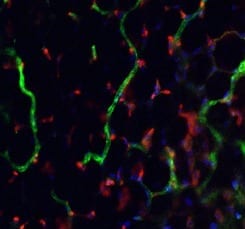Every year, the world consumes approximately 15 terawatts of power, according to some estimates.
Since the amount of annual harvestable solar energy has been estimated at 50 terawatts, students at Stevens Institute of Technology are working on a supercapacitor that will allow us to harness more of this renewable energy through biochar electrodes for supercapacitors, resulting in a cleaner, greener planet.
Supercapacitors are common today in solar panels and hydrogen fuel cell car batteries, but the material they use to store energy, activated carbon, is unsustainable and expensive. Biochar, on the other hand, represents a cheap, green alternative. The Chemical Engineering Senior Design team of Rachel Kenion, Liana Vaccari, and Katie Van Strander has designed biochar electrodes for supercapacitors, and is looking to eventually bring their solution to market. The group is advised by Dr. Woo Lee, the George Meade Bond Professor of Chemical Engineering and Materials Science.
For their project, the team designed, fabricated, and tested a prototype supercapacitor electrode. The group demonstrated biochar’s feasibility as an alternative to activated carbon for electrodes, which can be used in hybrid electric automobile batteries or home energy storage in solar panels.
“While the team’s findings are preliminary, the approach taken by us represents a small, but potentially very important step in realizing sustainable energy future over the next few decades,” says Dr. Lee.
Biochar is viewed as a green solution to the activated carbon currently used in supercapacitor electrodes. Unlike activated carbon, biochar is the byproduct of the pyrolysis process used to produce biofuels. That is, biochar comes from the burning of organic matter. As the use of biofuels increases, biochar production increases as well. “With our process, we are able to take that biochar and put it to good use in supercapacitors. Our supply comes from goldenrod crop, and through an IP-protected process, most organics, metals, and other impurities are removed. It is a more sustainable method of production than activated carbon,” Liana says. Another significant advantage: biochar is nontoxic and will not pollute the soil when it is tossed out. The team estimates that biochar costs almost half as much as activated carbon, and is more sustainable because it reuses the waste from biofuel production, a process with sustainable intentions to begin with.










